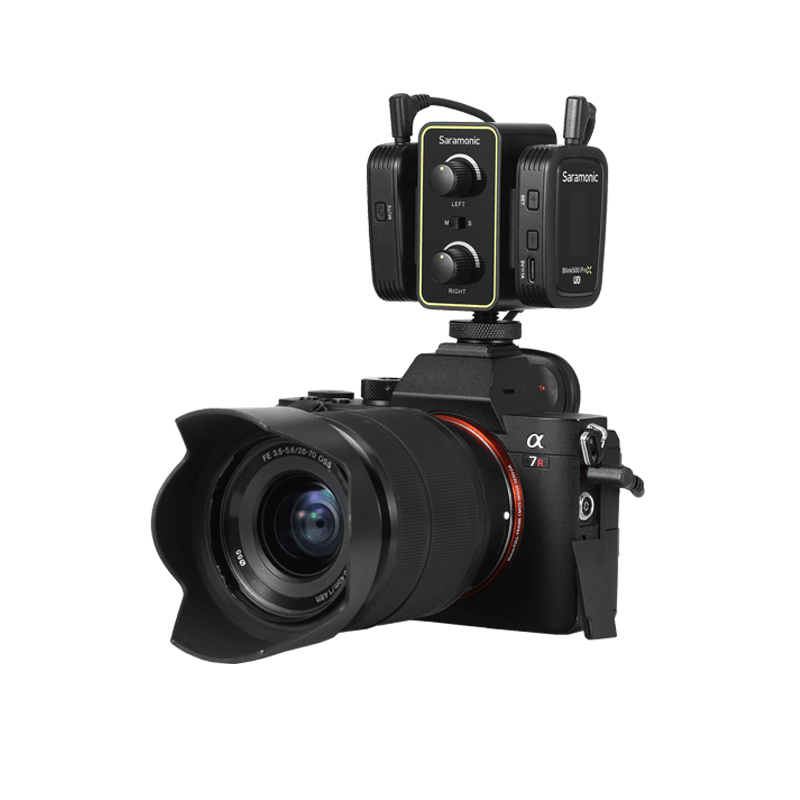Unlock Your Creativity: Discover the Ultimate Mixers for Your Camera Adventures!
When it comes to photography and videography, the visuals often steal the spotlight. However, the audio quality is just as crucial in creating a captivating experience. This is where mixers come into play. A mixer is an essential tool that allows you to blend multiple audio signals to create a rich soundscape that elevates your camera work. Whether you're capturing a documentary, a short film, or vlogs, having the right mixer can significantly enhance the overall quality of your production. This article aims to explore and compare different types of mixers available in the market, helping you make an informed purchase decision that aligns with your creative ambitions.

Understanding Mixers: What They Are and Why You Need One
Mixers are devices that combine multiple audio inputs into a single output, making them indispensable for audio production in photography and videography. They serve several purposes, such as adjusting levels, enhancing sound quality, and allowing for real-time audio effects. When you use a mixer with your camera, you gain the ability to improve sound clarity, reduce background noise, and effectively manage various audio sources. Imagine filming an interview where you can seamlessly blend the voices of multiple speakers while eliminating unwanted noise. This versatility is vital for achieving professional-quality audio, which can elevate your project to new heights.
Types of Mixers for Camera Use
As you explore the world of mixers, you’ll find several types tailored for different needs. Each type has its unique features and advantages that cater to various filming scenarios. The most common types include analog mixers, digital mixers, and portable mixers. Analog mixers are celebrated for their straightforward design and ease of use, making them ideal for beginners. In contrast, digital mixers bring advanced functionalities and seamless integration with modern technology, perfect for tech-savvy users. Lastly, portable mixers are designed for on-the-go filmmakers, offering convenience without sacrificing performance. Understanding these distinctions can help you choose the right mixer that fits your filming style.
Analog Mixers
Analog mixers are often favored for their simplicity and hands-on approach. They typically feature physical knobs and faders, providing a tactile experience that many sound engineers appreciate. These mixers excel in environments where quick adjustments are necessary, such as live events or interviews. Their straightforward design makes them user-friendly for those just starting in audio production. A friend of mine, who is an aspiring filmmaker, often uses an analog mixer for his short films. He loves the immediate feedback he gets from adjusting levels on the fly, which allows him to focus more on the creative aspects of his projects.
Digital Mixers
On the other hand, digital mixers are designed for users who want advanced functionalities and greater flexibility. They often come equipped with features like built-in effects, digital signal processing, and the ability to save presets. Digital mixers can connect to computers and software, allowing for complex audio manipulation that is not possible with analog systems. This is particularly beneficial for post-production work, where sound can be fine-tuned to perfection. A colleague of mine who works in a production studio swears by her digital mixer for its ability to handle intricate audio tasks effortlessly, which has been a game-changer for her projects.
Portable Mixers
For those who are constantly on the move, portable mixers offer an ideal solution. They are compact, lightweight, and designed for easy transport, making them perfect for outdoor shoots, interviews, or travel vlogs. Despite their small size, many portable mixers do not compromise on quality, providing excellent sound performance in a compact package. During a recent outdoor documentary shoot with my friend, we relied on a portable mixer to ensure we captured high-quality sound despite the windy conditions. Its convenience allowed us to focus on the content rather than worry about equipment logistics.
Key Features to Consider When Choosing a Mixer
Choosing the right mixer involves considering several key features that align with your specific needs. First, assess the number of channels you require; more channels are beneficial for complex audio setups with multiple sources. Compatibility with your camera system is essential, as not all mixers work seamlessly with every camera. Ease of use is another crucial factor; a user-friendly interface can save you time and frustration on set. Portability is vital if you plan to shoot in various locations, while sound quality should always be a top priority. Take the time to evaluate these features based on your filming scenarios, and don’t hesitate to seek advice from fellow filmmakers or sound engineers who might have valuable insights.
Comparative Analysis of Mixers: Pros and Cons
To make your decision easier, here’s a comparative analysis of the three types of mixers discussed: analog, digital, and portable. Analog mixers are praised for their simplicity and real-time control but may lack advanced features. Digital mixers shine with their versatility and advanced capabilities but can be overwhelming for beginners. Portable mixers are convenient and compact, making them perfect for travel, but they may have limited functionality compared to their larger counterparts. Consider the pros and cons of each type to determine which mixer aligns best with your filming needs. For instance, if you’re a beginner focused on simple projects, an analog mixer might be the right choice, while a digital mixer could be better suited for more advanced users or complex productions.
Making Informed Choices for Your Audio Experience
In conclusion, selecting the right mixer is crucial for enhancing your camera adventures and ensuring that your audio quality matches your stunning visuals. From understanding the different types of mixers available to evaluating their features and weighing their pros and cons, you are now better equipped to make an informed purchase decision. Remember to consider your specific needs, filming scenarios, and creative goals when exploring mixers. By choosing wisely, you can unlock new levels of creativity and deliver compelling audio experiences in your photographic and videographic pursuits.






Comentarios